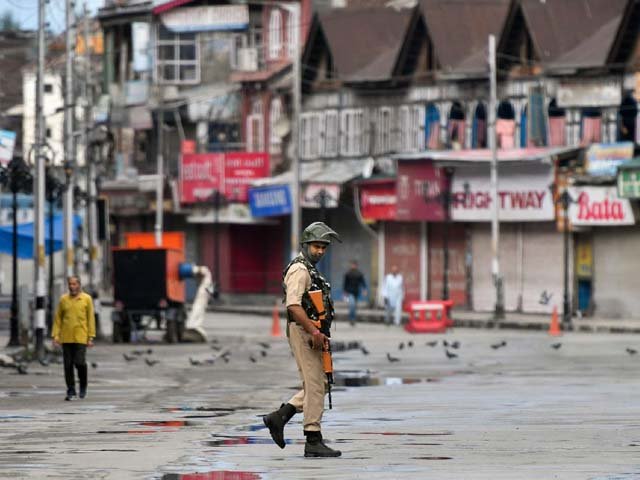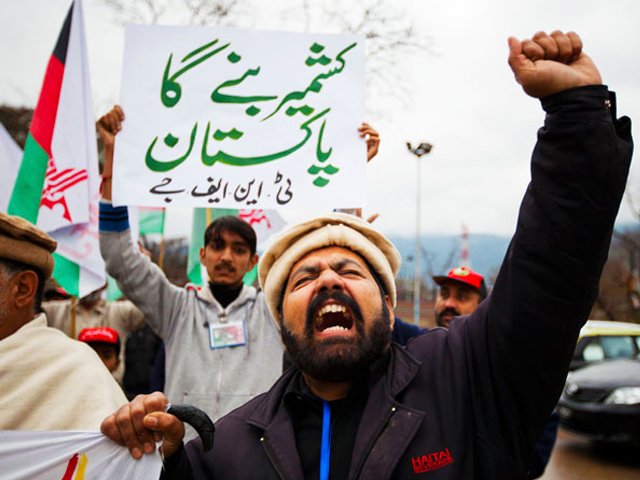
How can India justify killing a 16-year-old Kashmiri?
The valour of Kashmiris makes India uncomfortable. And this is shown how they treat them under their occupied rule.
I am enraged. And I am sure there are thousands of Kashmiri youngsters who are just as enraged as I am, for another young member of our ilk has been killed in cold blood. Suhail Sofi, aged 16, was killed in cold blood by the Indian police, while he was protesting against the deaths of two youngsters in Tral and the subsequent arrest of Masarat Alam, senior Hurriyat leader and pro-freedom activist.
The message is clear by the Indian establishment – if one of your people is killed, you are expected to stay quiet and move on, and if you choose to protest, you will be killed as well. And there seems no end to this vicious cycle. Casualty numbers like 68 in 2008 and 120 in 2010 would keep popping up on our news channels and no one will do anything to stop this perpetual massacre.
In order to fully understand India’s cruelty, we need to understand the issues surrounding Alam’s arrest.
He is considered to be next in line after Syed Ali Shah Geelani to take over the party and thousands in Kashmir see him as the leader who can channel their efforts for freedom to a more effective course. His role in the 2010 uprising unsettled the New Delhi government and its establishment in Kashmir, making him a favourite amongst Kashmiri youth. Upon his release, there was a huge outcry by the Indian ultra-nationalist journalists who demanded that he be rearrested – even though he had been released by the Indian courts after being found ‘not guilty’ in all 20 odd cases registered against him.
The day Alam was arrested, a rally was organised to welcome Geelani who was visiting Kashmir. The rally had a plethora of well-wishers and ardent followers; this was the first time that such a spectacle was seen after Alam’s arrest in 2010. There was euphoria amongst the people in Kashmir. Alam’s release and Geelani’s arrival worked as adrenaline for them. And since all these events were taking place after Khalid Wani was brutally tortured to death by the Indian army, it gave the people a channel to vent out their anger against India.
In the spur of the moment, to highlight their defiance to the Indian establishment, some people unfurled the Pakistani flag and chanted pro-freedom slogans.
And that was when all hell broke loose.
The gesture was not taken lightly; Mufti Sayeed had to crumble under the pressure of the rightist Bharatiya Janata Party (BJP) and he got Alam arrested. With this arrest, the Kashmiri youth saw the space for their freedom narrowing again, causing a claustrophobic sensation – one from which these youngsters wanted to liberate themselves. The reductionist Indian media personnel called them misguided youth who have no education, no jobs and hence they protest on the streets of Kashmir, and they knew that they could never allow their cause to be undermined like this.
Kashmiri youth are frustrated by the fact that the Indian state sequesters the space around them and plays a psychological warfare with its media portraying them as treacherous illiterate people who are good at nothing but making trouble. It was highly expected that people would see Alam’s arrest as undermining Kashmir’s narrative and that they would come out against India’s oppressive regime.
Largely, protests in Kashmir mean that the police can shoot at you and harass you as much as they like, and you have no right to stop them. However, if the same protesters hurl rocks at the Indian policemen or try to resist them in anyway, they are dubbed as defiant and out-of-control. This is how the Kashmiri narrative has been manipulated and twisted.
The valour of the Kashmiri people makes India uncomfortable. And this is shown how they treat Kashmiris under their occupied rule. The protests which erupted after Alam’s arrest resulted in Sofi’s death. According to news sources, Sofi was first detained by the Indian police and was then asked to run while the policemen shot at him from the back. He was killed in front of dozens of protesters.
If this doesn’t reek of sadism, I don’t know what does.
The assistant sub-inspector and the constable involved in Sofi’s murder have since been arrested and charged and an investigation has been promised. However, the primary question that remains is what gave these police personnel the impression that they could shoot a minor without having any fear of accountability.
When I inquired about the situation from my friends back home, one of them replied,
“Koshur khuun kotah sast chu”
(How cheap is Kashmir blood!)
Meanwhile, an Indian journalist with a verified Twitter account reduced the killing to this:
Raise Pak flags & slogans, go on rampage till forces act, play victim, get funding from Pakistan. Nice business model. #Kashmir #Narbal
— Abhijit Majumder (@abhijitmajumder) April 18, 2015
With such views persistent on the Indian side, hope for peace in Kashmir seems like a distant and unattainable dream.
Correction: In an earlier version of this blog, it was incorrectly mentioned that Suhail Sofi was shot in the head and the picture caption stated that he was shot by militants. Those statements are false and the errors are regretted. They have now been rectified. Our apologies for the inconvenience.




COMMENTS (194)
Comments are moderated and generally will be posted if they are on-topic and not abusive.
For more information, please see our Comments FAQ